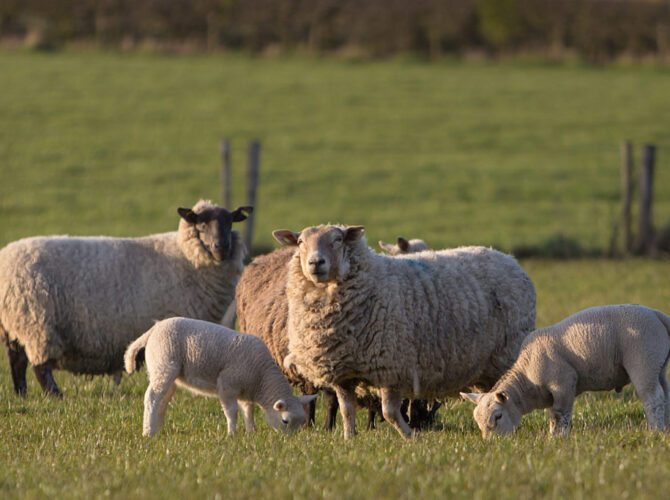Sheep Lameness: Causes, Treatments and Solutions
12th June 2025

Statistics show that almost 3 million sheep in the UK are lame at any one time. This number of lame sheep is costly, with an estimated cost to the UK sheep industry of £24 million per year. Lame sheep have poor fertility and lambs finish fattening later than they should. This means that lameness is economically unsustainable, not to mention the welfare concerns associated with lameness in UK flocks.
Lameness is commonly caused by one of the following three diseases:-
Scald (Interdigital Dermatitis)
- Caused by bacterial infection that thrives in moist conditions such as when sheep are grazing in long, wet grass or housed in wet straw beds.
- Characterised by erosions to the skin between the digits on one or more feet. No smell is present.

Foot Rot
- Caused by the bacteria Dichelobacter nodosus which can live in the environment (not on sheep’s feet) for up to 10 days. In the environment, it thrives in warm and humid conditions, and is very contagious.
- Characterised by a foul smell, pus discharge, separation of the hoof wall and sole. Affected sheep are extremely lame.
Contagious Ovine Digital Dermatitis (CODD)
- Caused by various bacteria which can arrive on a unit by bought in sheep contaminating the environment.
- Characterised by ulcers along the coronary band above the hoof, these ulcers can look like Orf but are not viral in nature. This leads to many sheep in the flock becoming severely lame.

These major causes of lameness are highly infectious and can cause significant issues within a flock. In order to be a sustainable and profitable sheep unit, the aim for lameness at the flock level is below 2%. To achieve this, it is important to have a management protocol to minimise and prevent the incidence on farm. The five-point plan is a clear strategy which can used to achieve this:

- Cull chronically affected sheep from the flock – for example a ewe that has been treated more than once for foot problems. By using a tagging system in the flock when a ewe is treated, this makes these “chronic offenders” easier to identify.
- Quarantine new animals into the flock to ensure infectious foot problems cannot contaminate the shared environments of healthy sheep and spread through the flock. Ideally, new sheep should be isolated for 28 days and should pass through a footbath every 5 days on a minimum of 3 occasions before joining the rest of the flock.
- Treat promptly to reduce the transmission of infection amongst others in the group. Group treatment can be provided using foot-bathing and individual treatments can be applied directly to affected feet.
- Avoid spreading infection during handling and gathering of sheep. With special attention to stoning wet poached ground; apply lime to floors of handling areas; clean and disinfect equipment after handling events and ideally pass a group through a footbath before moving to new, clean pasture.
- Vaccinate breeding stock to build immunity in the flock and time dosing to coincide with high-risk times of year.
Fane Valley Stores have a wide array of foot-bathing solutions and equipment to help you manage lameness in your flock. We also stock foot-rot vaccine for sheep. Call into your local store for more information and advice on how we can help with lameness on your farm.

